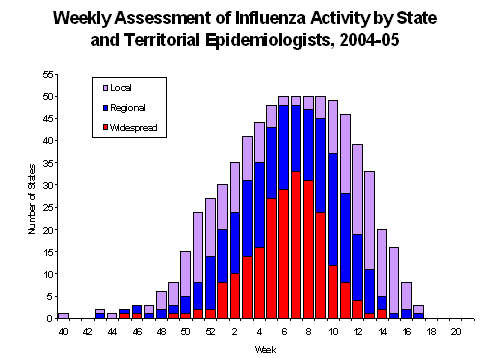Question Sheet: Flu Patrol
Before reading:
- Have you ever had the flu? How did it affect you?
- Is the flu dangerous? Why or why not?
During reading:
- Why is the flu more dangerous than a cold?
- Describe how a virus works.
- How does a flu shot help you fight off the disease?
- Why are people particularly concerned about bird flu?
- What is H5N1, and why are people watching its spread closely?
- How can you help prevent the flu from spreading?
After reading:
- Why does influenza research require international cooperation? See www.hc-sc.gc.ca/ahc-asc/media/nr-cp/2005/2005_fin_e.html(Health Canada).
- How is influenza like the common cold? How is it different? See www.lungusa.org/site/pp.asp?c=dvLUK9O0E&b=23161(American Lung Association).
- Schaffner says that “influenza epidemics are like hurricanes.” Do you think
that’s a suitable or accurate comparison? How would a flu epidemic be similar to
and different from a natural disaster?
- The influenza virus is tough to control because it’s constantly changing.
How might a scientist address or attempt to counter this problem? See www3.niaid.nih.gov/news/focuson/flu/research/primer/default.htm
(National Institute of Allergy and Infectious Diseases).
- Who was affected by the 1918 flu? Write a description of what happened in
1918 and where. What lessons were learned from this epidemic? See www.cbc.ca/news/background/flu/fluepidemic.html (CBC News) and
- A number of epidemics of avian flu have started in Asia. Why do you think
that might be? See www.fao.org/ag/againfo/subjects/en/health/
diseases-cards/avian_qa.html#1
(Food and Agricultural Organization of the United Nations).
SOCIAL STUDIES
What has the United States government done so far to prepare for a flu epidemic? What more could the government be doing? See www.whitehouse.gov/news/releases/2005/11/20051101.html (White House).
LANGUAGE ARTS
- In recent weeks, newspapers have featured a number of articles on the
dangers of the bird flu. Find two different articles on the topic and explain
which one you think is better and why. See, for example, www.usatoday.com/news/nation/
2005-12-06-bird-flu-prepare_x.htm
(USA Today) or www.boston.com/news/local/articles/2005/11/20/
nh_prepares_for_bird_flu_outbreak/
(Boston Globe).
- How would you start a short story about a character living in a world
suffering through a flu epidemic? How would your character react to the death of
a close friend or a family member? How would he or she react to reports of some
people dying and others surviving in various parts of the world?
MATHEMATICS
The bar graph shown below gives, week by week, the number of states of the United States that reported local, regional (blue), or widespread (red) influenza activity during the 2004-2005 flu season. The plot starts at week 40 of 2004 and goes to week 17 of 2005.
 |
| Centers for Disease Control and
Prevention |
In which week did influenza activity peak? During that week, how many states reported regional activity? How many states reported widespread activity? For how many consecutive weeks did one or more states report widespread activity? When did that string of weeks start? When did the streak end? How many states reported widespread activity at least once during the season?